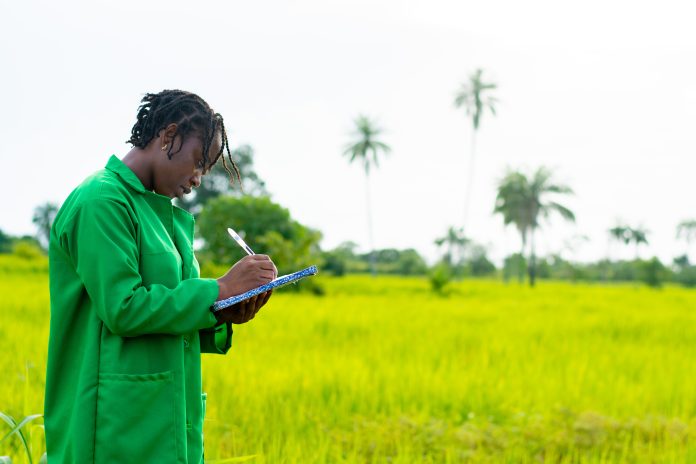With COP30 well into its second week, the debate on agriculture’s place in global climate action has intensified. Against this backdrop, CGIAR recently released a new suite of scientific reports that map out how the world can overhaul food systems to deliver measurable mitigation and adaptation outcomes.
The seven briefs arrive at a moment when negotiators are under pressure to convert the summit’s ambition into grounded, implementable pathways that link directly to farmers, landscapes and supply chains. Agriculture has featured prominently in Brazil’s “Action Agenda,” and the CGIAR evidence now offers a structured framework for what a climate-aligned food system transition could look like.
Although each report focuses on a different piece of the agri-food puzzle, they collectively form a coherent blueprint for shifting the sector away from extractive practices and toward regenerative, inclusive and climate-resilient models. For Africa, where agriculture provides income for almost 60 percent of the population and climate-related losses already cost an estimated USD 7–15 billion every year, the evidence underscores the urgency of building food systems capable of withstanding rising temperatures, erratic rainfall and accelerating land degradation.
A central message running through the research is the need to pursue mitigation and adaptation at the same time. The reports reflect a departure from older approaches that treated these priorities separately. Instead, they show that interventions such as soil restoration, agroforestry, diversified cropping and improved livestock systems can simultaneously rebuild ecological resilience and reduce emissions. This mirrors the daily constraints African smallholders face: stabilizing yields under unpredictable seasons while policy frameworks push for lower-emission agriculture.
In countries like Malawi, Kenya or Ghana, where smallholders produce up to 80 percent of food, dual-benefit interventions are not aspirational; they are essential for survival.
Read also: Malawi scales up water security as 5.6 million m³ Bwanje Dam becomes a climate resilience lifeline
Another major insight relates to context and ownership. CGIAR stresses that climate solutions cannot be flown in from multilateral conferences and imposed on heterogeneous agricultural landscapes. Instead, the research points to the importance of local institutions, Indigenous knowledge, geography and political economy. In West Africa’s cacao belt, for example, agroforestry succeeds when it is grounded in cooperative-led systems rather than generic carbon-farming templates.
In Ethiopia’s highlands, the processes that restore degraded hillsides differ entirely from those that revitalize intensively farmed valley-bottom soils. Northern Namibia’s pastoral systems rely on mobility, which any climate strategy must respect rather than constrain. By emphasizing place-based design, the reports echo a growing recognition across Africa that durable climate action is rooted in community agency.
The studies also highlight the enabling conditions required for promising solutions to scale. CGIAR points to long-standing structural barriers within African agriculture, including weak access to finance, inconsistent policy signals, fragmented markets and under-resourced extension systems.
Even as climate finance expands globally, less than 3 percent reaches African smallholder, one of the most vulnerable groups on the continent. The reports argue that land restoration, bioeconomy initiatives and low-emission value chains will struggle to grow beyond pilot sites unless regulatory frameworks, procurement models, financial instruments and advisory services are aligned to support long-term adoption.
Running through the research is a notable shift toward regeneration rather than incremental efficiency. Rather than focusing solely on reducing harm, the reports emphasize repairing ecological function, restoring soil carbon, rehabilitating degraded landscapes, and embedding circular bioeconomy principles that minimize waste and close nutrient loops.
Many African countries have already begun to demonstrate what scale can look like. Ethiopia’s long-running watershed programmes have rehabilitated millions of hectares. Niger’s farmer-managed natural regeneration revived vast stretches of previously barren land. Rwanda’s integrated hillside systems have combined soil conservation with increased productivity. CGIAR’s evidence positions these efforts not as isolated success stories but as foundations for a continental transition toward climate-resilient agriculture.
Read also: UNDP, REA, GEF launch solar mini-grid to boost agriculture in Plateau State, Nigeria
Equity forms another unifying theme. Each report reinforces the idea that climate action in food systems must be socially grounded. Whether through livestock systems that safeguard pastoralist livelihoods, procurement approaches that favor smallholder farmers, or restoration initiatives that deliver clear community benefits, the evidence frames equity as a precondition for effective climate action. This speaks directly to African realities, where women, youth and marginalized rural populations bear the greatest burden of climate volatility.
CGIAR’s emphasis on inclusive governance reflects the growing recognition that climate interventions fail when they reinforce existing inequalities.
Taken as a whole, the CGIAR reports deliver one of the most detailed scientific frameworks shaping COP30’s food systems discussions. They argue that a resilient and low-emission agri-food economy depends on integrated mitigation and adaptation efforts; on solutions built around local context; on robust enabling systems; on regeneration rather than extraction; and on equity embedded at every level.
As negotiations continue in Belém, the tension between global ambition and on-the-ground realities remains palpable. What CGIAR has provided is not just technical insight but a clear reminder that food systems, responsible for roughly a third of global emissions and central to livelihoods across Africa, cannot remain peripheral to climate action.
Here are the reports:
- Land restoration for food security and climate action
- Framework-based strategies for low-emission innovations in agrifood systems
- Farming smarter: How cover crops and integrated systems deliver climate action
- A fairer future: Equitable climate action in LMIC livestock systems
- Advancing climate goals through bioeconomy and circular economy in food systems
- The power of public food procurement to deliver for climate
- Advancing low-emission value chains for climate action
Source: CGIAR







